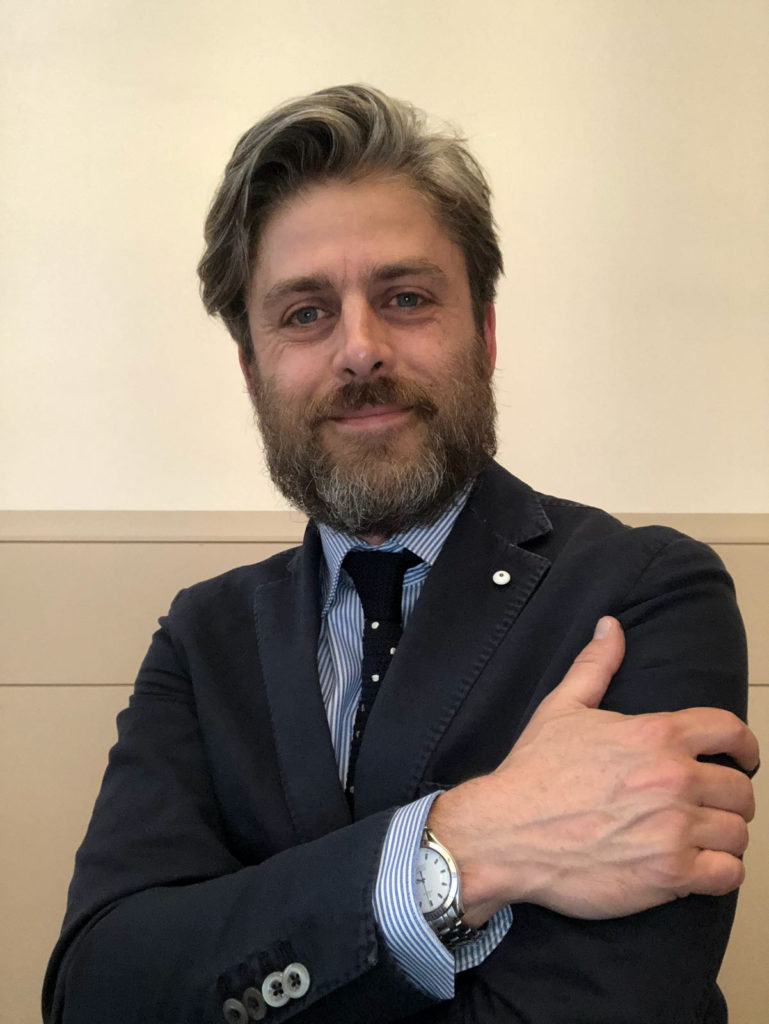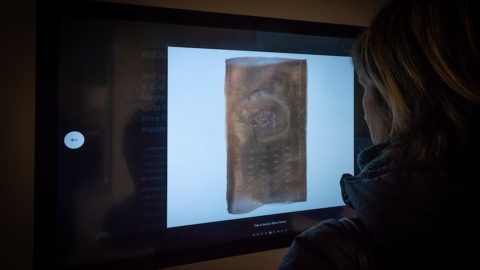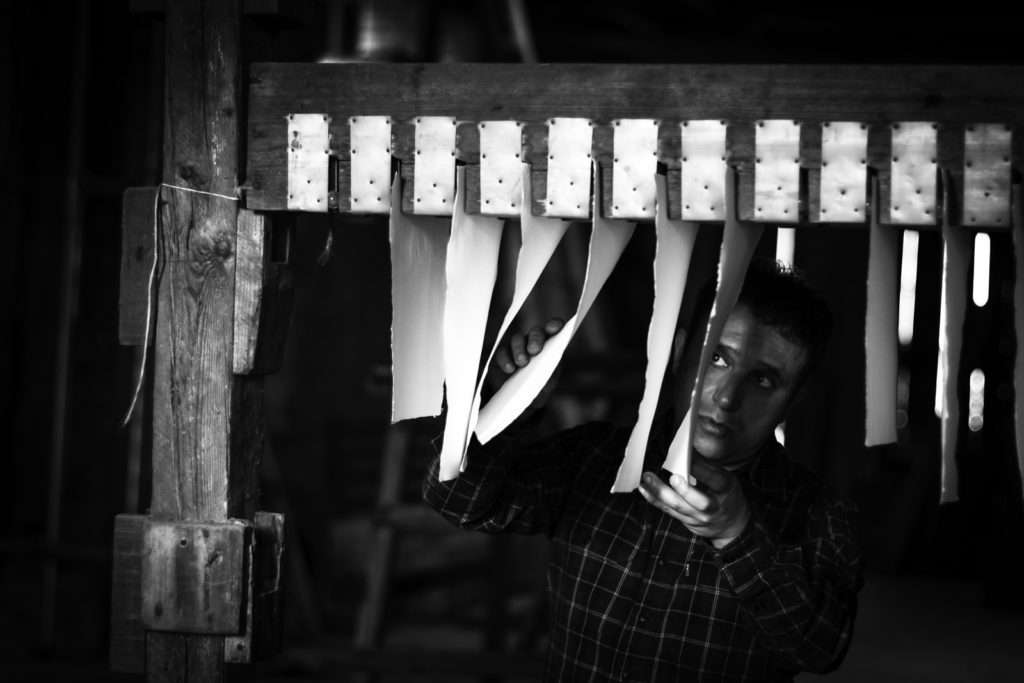Today they accompany you to discover a fascinating place, the Paper Museum of Pescia, a perfect testimony of the conservation of culture, history and tradition. A small immersive journey accompanied by images and videos that make us understand the importance of this place.
The Paper Museum of Pescia, located in Pietrabuona, was born in 1992 from the happy intuition of Ferruccio Belluomini and Giuliano Carrara, promoters of a project that brings together, in a private association, entrepreneurs in the paper sector, public bodies, associations and natural persons. The museum's mission is to protect, pass on and make papermaking known: an activity present in the Pescia area, in uninterrupted continuity, since the end of the fifteenth century. The Museum has settled in the renovated rooms of the former elementary school of Pietrabuona, a building inside which exhibition spaces, laboratories for educational activities, offices, library and conference room have been created: a place where it is possible to make known the history of paper from its origins to today. In 2003, the Museum then purchased the old water-powered factory called "Le Carte": a paper mill built at the beginning of the 1700th century which preserves all the machinery of the 2011s used for the manufacture of paper by hand intact and functioning. . The completely restored building, made functional again and adapted to the needs of a contemporary museum - the works began in 2024 and will presumably end in XNUMX - will become the new seat of the Paper Museum of Pescia: a multipurpose center in which the exhibition itinerary with the didactic-demonstrative production of handmade paper, offices, conference rooms, spaces for permanent exhibitions and temporary exhibitions, the deposit of the collections and the paper archive. In fact, the Museum received as a gift about 7000 pieces made up of watermarked paper shapes, watermark waxes, metal punches, watermarked sheets, stamps and other tools and objects for making paper, from the ancient Magnani Paper Mills of Pescia. The Magnani paper mills also wanted to donate their entire company archive to the Museum, already subject to restrictions by the competent superintendency in 1978 and considered, given its total 600 linear metres, one of the most important Italian company archives. On 9 April 2016, the Museum inaugurated the new archive wing at the old Le Carte factory where this documentation has found its definitive home: once inventoried and cataloged according to the principles of modern archiving, the documentation can finally be made available to scholars and all those who request it. The Museum has a strong and deep-rooted relationship with the territory of reference: it is an expression of it, it interprets the requests for conservation of a tradition rooted in the collective memory, it is a garrison of architectural, social, artistic, economic, cultural and environmental protection. Finally, on a larger territorial scale, the Museum has established partnerships with various local institutions. In particular, together with the Paper District of Capannori, the municipality of Pescia, the municipality of Villa Basilica, the province of Pistoia and that of Lucca, the "Paper Road in Tuscany" project has been created: productive realities, museums, training initiatives and cultural activities brought together in a system that integrates tourism, culture and companies in the sector.
Speech by Massimiliano Bini, Director of the Museum: “The first hypotheses regarding the establishment of a paper museum in Pescia were advanced in the mid-eighties of the last century by Carlo Cresti, responsible for Tuscany for a larger research project relating to the organization of a museum system Italian scientists. The fact-finding investigation and the relative publication of the documents of 19881 open for the first time the history of paper in the land of Pescia in a museological perspective and dictated ideas and reflections which, as we will see, have not been disregarded.
While Cresti warned against unrealistic recovery operations and the temptation to transform every factory into a monument and every monument into a museum, he applauded the creation of a "Documentation center on ancient papermaking" which had the purpose of census, to catalog documents and to process data relating to the individual paper mills and the speci c techniques of the processes, waiting to arrive at the formation of a real Paper Museum.

A non-specious initiative therefore but "motivated by the persistence of an ancient productive vocation on site and by the current legitimate desire for analysis and reflection on economic, social and cultural aspects closely connected to an activity (paper-making) which has strongly marked the local urban and territorial reality".
Faced with such a consolidated territorial identity, the scholar advised the local political and productive forces on a concrete approach for the possible reuse of industrial archeology finds, he hoped for the acquisition of 'collections' of private origin, he identified, realistically, « two or three of the building artefacts of greater typological significance and of better conservation also of the hydraulic equipment » which should have become the subject of restoration, indicated, in view of an overall territorial setting, a hypothesis of route and concentrated his attention on the «paper mill 'Le Carte ' (owned by Magnani) where fine paper and ligranates are still produced (albeit in limited quantities) with the ancient 'hand' method »
Following these precise indications, a group of public and private partners, in particular companies operating in the paper sector, gave life in 1992 to the Documentation Center on Ancient Paper Processing Association which took up residence in the renovated rooms of the former elementary school. The Centre, the expression of a collective will inspired by the safeguarding and enhancement of Pescia's paper heritage, qualified itself in an initial phase as a recognized territorial presence, setting itself the ambitious goal of fully implementing the guidelines dictated by Cresti and established, within its statute, a first sketch of a museum mission. In a second phase, the association worked to solicit the competent Superintendence to affix the bond of safeguard to the eighteenth-century Le Carte paper mill, a result which was achieved in 1995 effectively saving the 'monument' from incongruous transformations of use. In a third and final phase, thanks to a private donation, the Center managed to acquire full ownership of the factory in 2003, thus being able to start the complex restructuring process and consequently changed its name to the Paper Museum Association of Pescia Onlus.
In the last 8 years, thanks above all to the system project "La Via della Carta in Toscana",5 it has been possible to acquire substantial public and private funding which in April 2016 made it possible to inaugurate the first wing of the Museum, the Magnani Historical Archive , and which will allow, with the help of additional resources, to complete the intervention in the next five years. In addition to the commitment for the restoration of the paper mill, the Association has dedicated itself to the identification and subsequent recovery of the collections represented by all those tools related to the production of handmade paper such as forms from ligranate paper, ligrana waxes, punches , stamps, metal sheets and ligranate sheets accumulated over the centuries and which were the property of the former Magnani Paper Mills of Pescia. In order to safeguard this huge heritage from possible dispersions and at the end of a laborious process of persuasion towards the property, these objects were donated to the Museum in December 2004.
Everything else can be discovered directly at the Paper Museum in Pescia…
Furthermore, on 19 March 2018, at the end of a long process and after a year of incubation carried out at the Social Business Lab in Pistoia, the Social Enterprise Magnani Pescia Srl was established.
The Company, in collaboration with the Pescia Paper Museum Association Onlus which promoted its creation, has resumed the manufacture of hand-made watermarked paper and paper products unique in terms of quality and refinement, generating new jobs in a manufacture that has its roots in the land of Pescia in the fifteenth century.
The project was launched in 2012 with the aim, still in its infancy at the time, of bringing together at the Paper Museum Paper Masters, Filigranists and Stitchers, now retired and coming from the most prestigious paper mill in the Valleriana or the Ancient Magnani Paper Mills of Pescia, and young people eager to learn the secrets of handmade paper: a project for the protection and intergenerational transmission of skills and knowledge that would otherwise be lost.
In 2014, within a larger program called Pinocchio's Tuscany funded by the Region, it was possible to access a contribution which made it possible to create a first experimental laboratory for the production of sheets of handmade paper and new shapes from paper with watermarks representing the famous puppet: the laboratory and the new watermarked paper produced were successfully presented in 2015 at the Fuori EXPO in Milan.
During the incubation period it was possible to clarify the many aspects linked to the birth of a company, such as the economic and financial plan, the overall marketing plan, and also the mission and vision of the company itself. The accompanying process ended very positively: the proposed idea was deemed worthy of a non-repayable grant and it was possible to officially present the company on 17 April 2018 in Pistoia on the occasion of the Social Business Day in the presence of the Nobel Prize Professor Muhammad Yunus.






